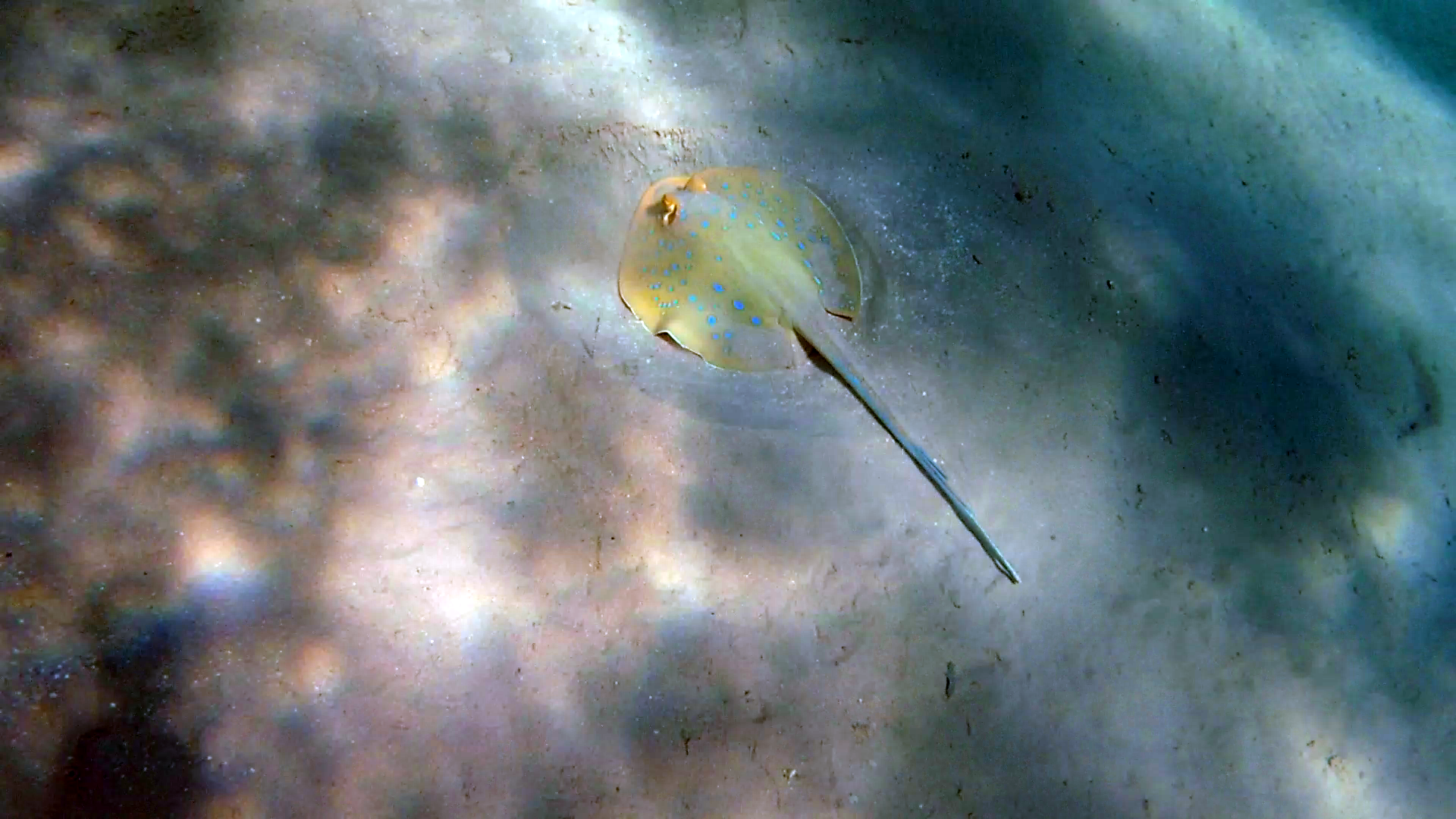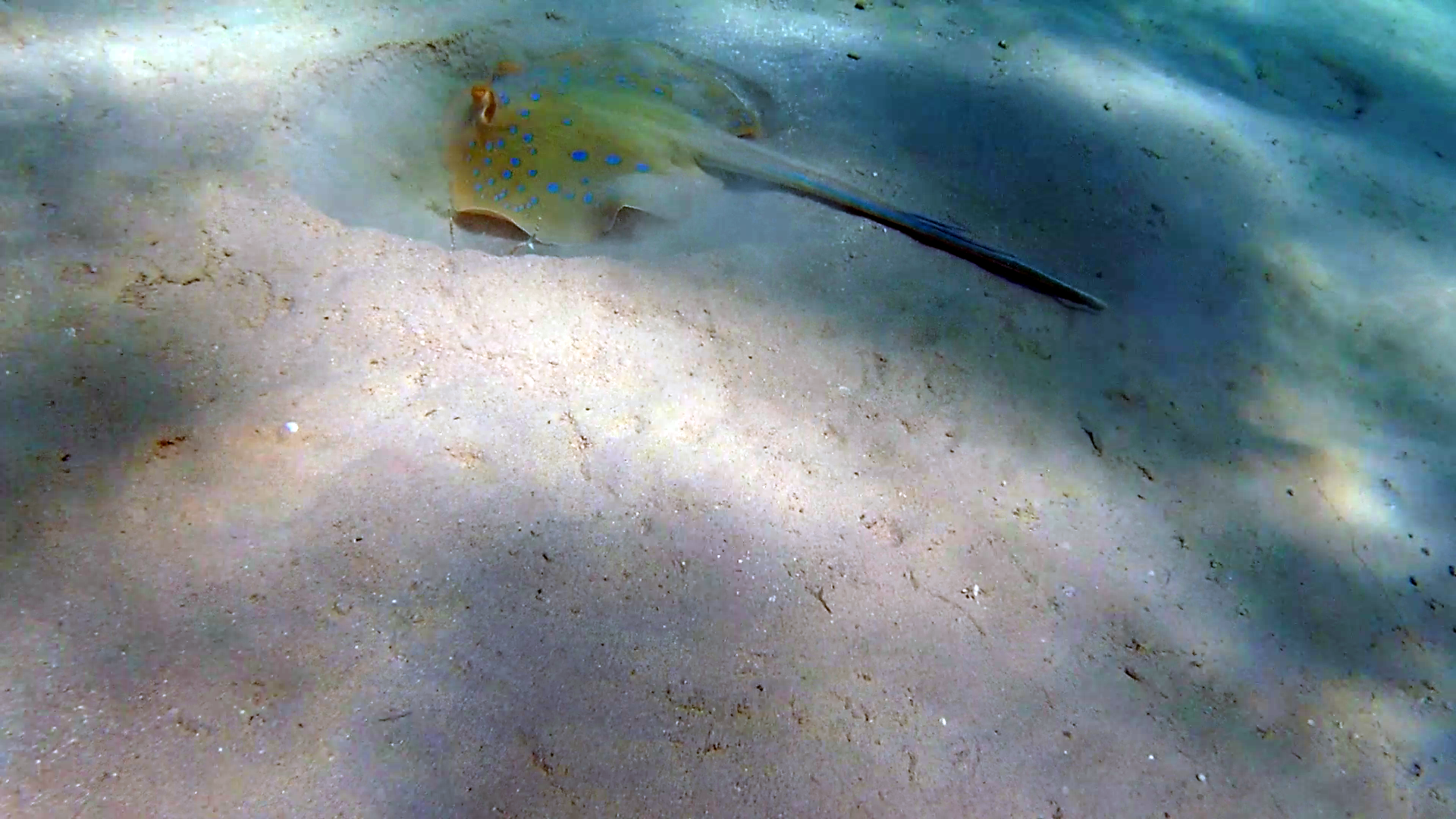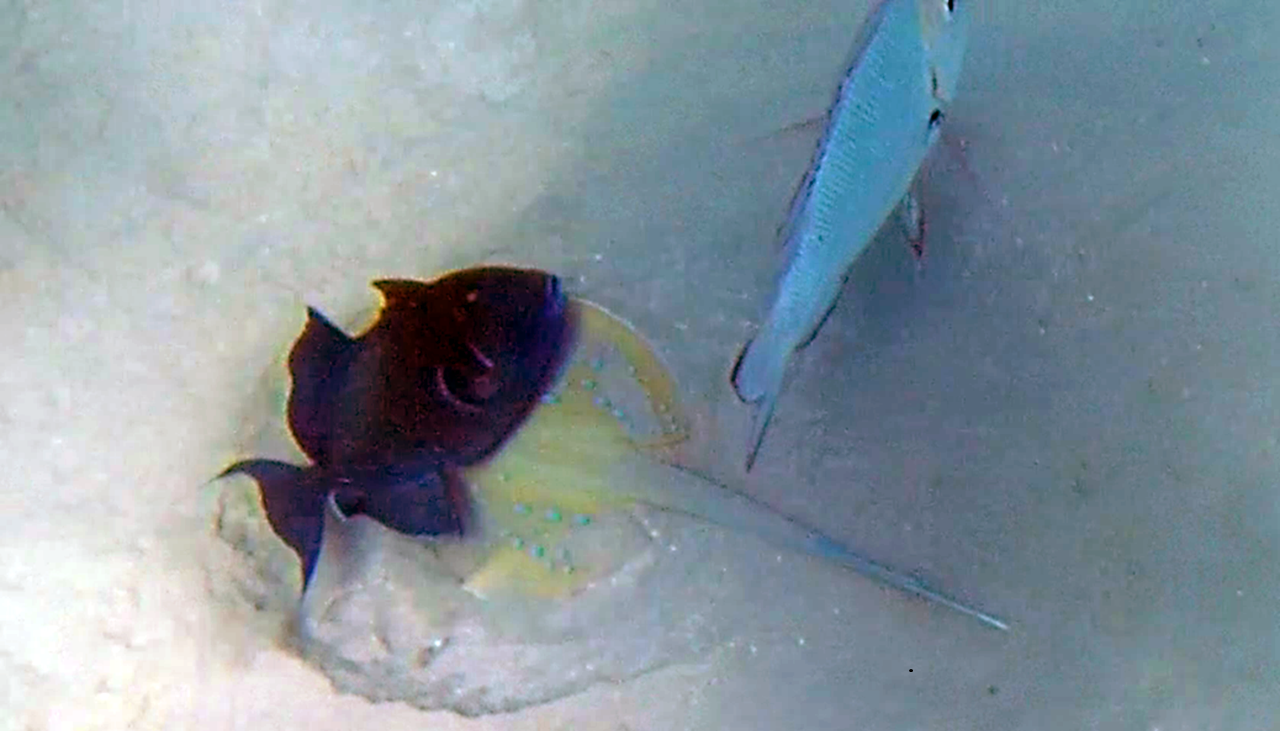Bluespotted ribbontail ray - Taeniura Lymma
The bluespotted ribbontail ray (Taeniura lymma) is a species of stingray in the family Dasyatidae. Found from the intertidal zone to a depth of 30 m (100 ft), this species is common throughout the tropical Indian and western Pacific Oceans in nearshore, coral reef-associated habitats. It is a fairly small ray, not exceeding 35 cm (14 in) in width, with a mostly smooth, oval pectoral fin disc, large protruding eyes, and a relatively short and thick tail with a deep fin fold underneath. It can be easily identified by its striking color pattern of many electric blue spots on a yellowish background, with a pair of blue stripes on the tail. Pastinaca macchie blu Bluespotted ray Taeniura Lymma intotheblue.it

Distribution and habitat
Widespread in the nearshore waters of the tropical Indo-Pacific region, the bluespotted ribbontail ray has a range that extends around the periphery of the Indian Ocean from South Africa to the Arabian Peninsula to Southeast Asia, including Madagascar, Mauritius, Zanzibar, the Seychelles, Sri Lanka, and the Maldives. It is rare in the Persian Gulf and Gulf of Oman. In the Pacific Ocean, this species is found from the Philippines to northern Australia, as well as around numerous Melanesian and Polynesian islands as far east as the Solomon Islands. Rarely found deeper than 30 m (100 ft), the bluespotted ribbontail ray is a bottom-dwelling species that frequents coral reefs and adjacent sandy flats. It is also commonly encountered in the intertidal zone and tidal pools, and has been sighted near seagrass beds. Every summer, considerable numbers of bluespotted ribbontail rays arrive off South Africa.

Description
The bluespotted ribbontail ray has distinctive coloration. The pectoral fin disc of the bluespotted ribbontail ray is oval in shape, around four-fifths as wide as long, with a rounded to broadly angular snout. The large, protruding eyes are immediately followed by the broad spiracles. There is a narrow flap of skin between the nares with a fringed posterior margin, reaching past the mouth. The lower jaw dips at the middle and deep furrows are present at the mouth corners. There are 15–24 tooth rows in either jaw, arranged into pavement-like plates, and two large papillae on the floor of the mouth. The pelvic fins are narrow and angular. The thick, depressed tail measures about 1.5 times the disc length and bears one or two (usually two) serrated spines well behind the tail base; there is a deep fin fold on the ventral surface, reaching the tip of the tail, and a low midline ridge on the upper surface.
Il Trigone a macchie blu – The Bluespotted Ribbontail Ray – Taeniura lymma – intotheblue.it
Biology and ecology
The bluespotted ribbontail ray hides amongst coral during the day. One of the most abundant stingrays inhabiting Indo-Pacific reefs, the bluespotted ribbontail ray generally spends the day hidden alone inside caves or under coral ledges or other debris (including from shipwrecks), often with only its tail showing.At night, small groups assemble and swim onto shallow sandy flats with the rising tide to feed. Unlike many other stingrays, this species seldom buries itself in sand. The bluespotted ribbontail ray excavates sand pits in search of molluscs, polychaete worms, shrimps, crabs, and small benthic bony fishes; when prey is located, it is trapped by the body of the ray and maneuvered into the mouth with the disc. Other fishes, such as goatfish, frequently follow foraging rays, seeking food missed by the ray.
Pastinaca macchie blu Bluespotted ray Taeniura Lymma intotheblue.it
https://en.wikipedia.org/wiki/Bluespotted_ribbontail_ray

